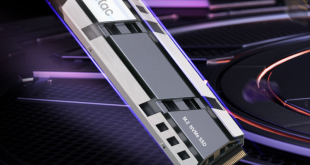The RT-AC66U has a simple look with a striped black pattern on top, and is surprisingly thin.
The back of the RT-AC66U fits quite a lot into a small space as it features 3 x Antenna screws, as well as 2 x USB 2.0 ports and the 5 xRJ45 Gigabit ports.
On the front of the device are a series of LED's, in fact an impressive 9 blue LED's. These will, at a glance, tell you exactly what's plugged in to the RT-AC66U and if any problems have arisen.
After fitting the antennas, the RT-AC66U takes up quite a bit more space, however it should give excellent coverage.
From the back it does look a bit cramped, but none of the ports are blocked with the Antennas in the standard and recommended arrangement.
 KitGuru KitGuru.net – Tech News | Hardware News | Hardware Reviews | IOS | Mobile | Gaming | Graphics Cards
KitGuru KitGuru.net – Tech News | Hardware News | Hardware Reviews | IOS | Mobile | Gaming | Graphics Cards








thats great, but id only buy this for laptops, and id need a ton of those USB dongles which make the laptop very bulky IMO.
“Can’t get full speed out of the device with current technology.”
I don’t see how this is a Con? You say it’s future proofed as a pro, then say it’s a con at the same time? I’d rather it be ahead of the game so I don’t have to be buying new routers when faster tech comes out.
I understand the point – its very fast, but its hard to get full speeds. None of my laptops can handle this speed, due to the current technology. so its good to look ahead but right now you are limited.
Good review actually, im buying one as I might pick up a few of those USB netgear dongles too.
Kitguru is an excellent website but the author of this article seems to have some difficulty with consistent units of measurement. There is quite a difference between MB/s (megabytes per second) and Mb/s or Mbps (megabits per second). 450 MB/s is about 3600 Mbps (SSD data transfer speeds) and is unlikely to be seen on a current wireless router.
Hi Idawari, That was actually my fault as I meant to edit the 2 or 3 ‘MB/s’ errors to the correct naming.